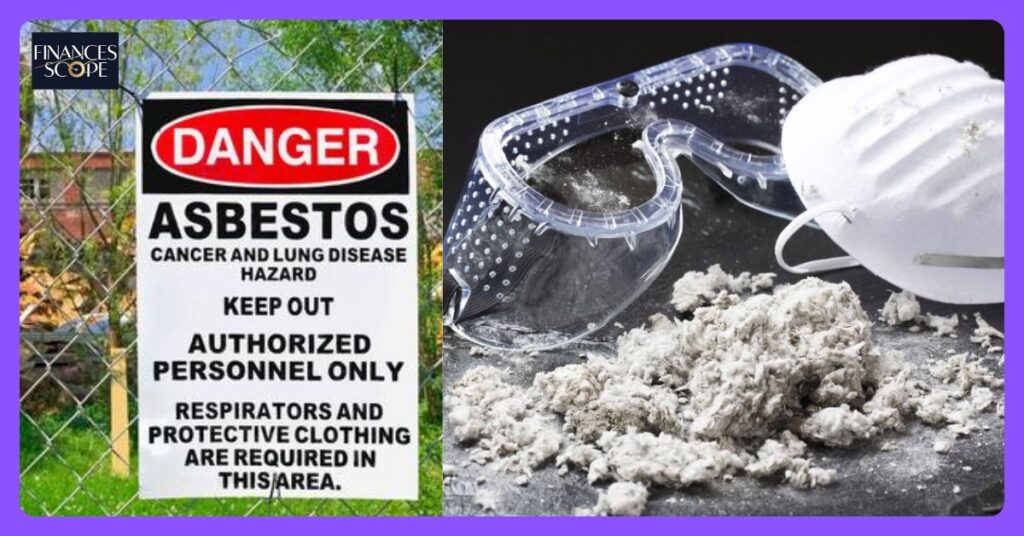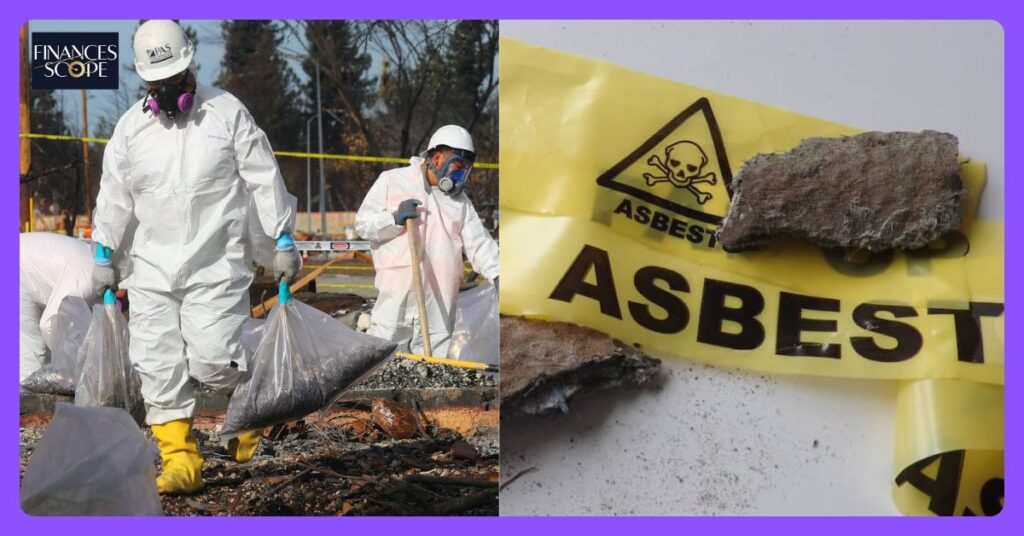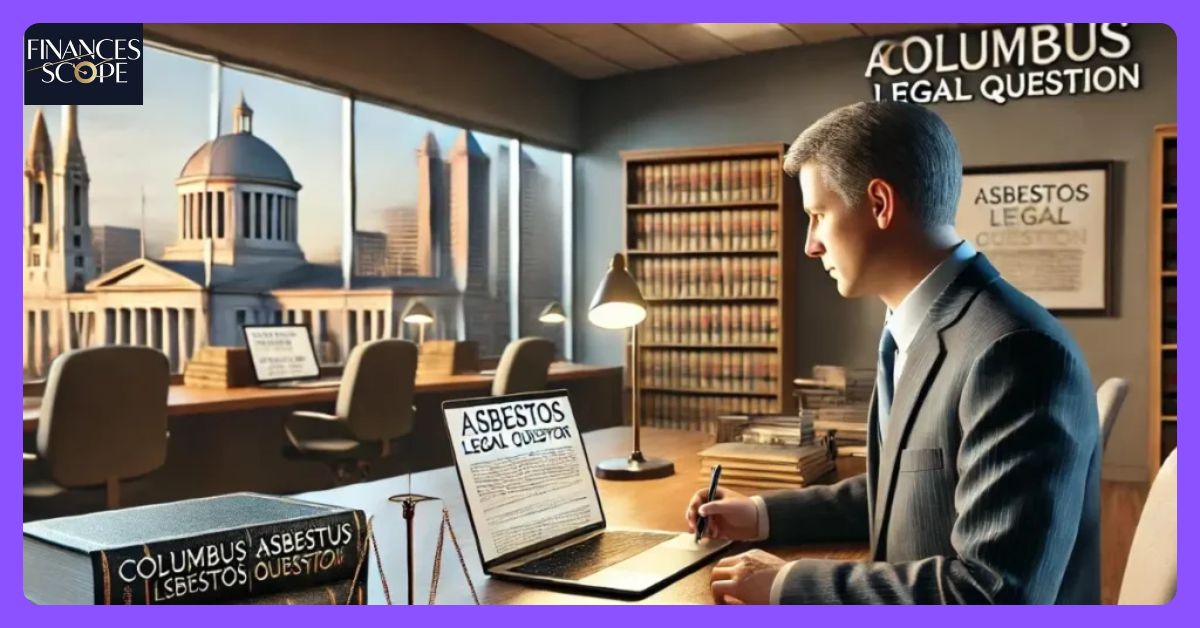Asbestos is a serious issue in Columbus. Many buildings contain this harmful material. It can cause health problems. Legal issues often arise from exposure.
We’ll cover legal aspects, health risks, and resources. Our goal is to provide clear, helpful information. We’ll use simple language to explain complex topics. This guide will help you understand your rights and options.
Historical Context Of Asbestos In Columbus
Columbus has a long history with asbestos. It was widely used in construction. Many old buildings still contain it. Industries relied on it for insulation. Its use peaked in the mid-20th century.
Asbestos was praised for its fire-resistant properties. It was cheap and effective. This led to widespread use across Columbus. As the city grew, so did asbestos use. New buildings meant more asbestos. Old structures were renovated with asbestos materials.
Awareness of dangers grew slowly. By the 1970s, health risks became clear. Columbus had to change its approach. Laws were passed to regulate asbestos use. Removal became a priority in public buildings. The process of making Columbus asbestos-safe continues today.
Legal Framework For Asbestos Exposure In Columbus
Columbus follows strict asbestos laws. These laws protect people from exposure. They cover handling and removal. Both state and federal regulations apply. Building owners must follow these rules. So must contractors and workers.

Ohio has its own asbestos program. It works with federal guidelines. The Ohio EPA oversees this. They enforce regulations on asbestos management. Proper licensing is required for asbestos work. This includes removal, inspection, and disposal.
OSHA sets workplace standards. These protect workers from exposure. Employers must provide safety equipment. They must also train workers about risks. Regular air quality testing is often required.
Columbus city codes also address asbestos. They require permits for renovation and demolition. Buildings must be inspected before work begins. If asbestos is found, special procedures must be followed.
Regulations And Compliance
Compliance with asbestos regulations is crucial in Columbus. Building owners have specific responsibilities. They must assess their properties for asbestos. If found, they must create a management plan. This plan details how asbestos will be handled.
Contractors need special certifications. They must follow strict safety protocols. Proper equipment and disposal methods are mandatory. Workers must wear protective gear. Air quality must be monitored during removal.
Notification is important. Property owners must inform occupants about asbestos presence. Before work begins, local authorities must be notified. This allows for proper oversight. Transparency is key in asbestos management.
Regular inspections help ensure compliance. Buildings with known asbestos must be checked periodically. Any changes in condition must be addressed. Deteriorating asbestos poses the greatest risk. Quick action is necessary if damage is found.
Read This Blog: Comprehensive Guide To Jackson Asbestos Legal Questions
Asbestos Litigation In Columbus
Asbestos litigation is common in Columbus. Many seek compensation for exposure. Lawsuits target companies that used or produced asbestos. Former employers are often defendants. So are manufacturers of asbestos products.
Proving exposure can be challenging. Many diseases appear decades after exposure. Linking current health issues to past exposure requires expert testimony. Medical records and work histories are crucial evidence.
Class action lawsuits have occurred in Columbus. These involve groups affected by the same asbestos source. Such cases can lead to large settlements. Individual lawsuits are also common. These focus on a single person’s exposure and health issues.
Compensation varies widely. It depends on illness severity and fault. Settlements can cover medical expenses and lost wages. They may include pain and suffering damages. In some cases, punitive damages are awarded.
Health Risks And Legal Action
Asbestos exposure causes serious health problems. Mesothelioma is the most well-known. This rare cancer affects the lungs or abdomen. Lung cancer is another risk. So is asbestosis, a chronic lung disease.

Legal action often follows diagnosis. Patients or families may sue for compensation. The goal is to cover costs and lost income. Proving the link between exposure and illness is crucial. Expert medical testimony is usually needed.
Prevention is a key focus of legal efforts. Laws aim to stop new exposures. This includes regulations on removal and handling. Legal action can force property owners to address risks. This helps protect current and future occupants.
Workers’ compensation claims are common. Employees exposed on the job may be eligible. These claims can provide medical care and lost wage benefits. They’re separate from lawsuits against employers. Some workers pursue both options.
Pursuing Compensation
Pursuing compensation is complex. Victims must prove exposure and harm. This often requires extensive documentation. Medical records are crucial. So are employment histories. Witnesses may need to testify about working conditions.
Multiple parties may be liable. Manufacturers, suppliers, and employers could be responsible. Identifying all potential defendants is important. It increases chances of fair compensation. Lawyers investigate to find all exposure sources.
Compensation amounts vary widely. Factors include illness severity and lost income. Medical expenses, current and future, are considered. Pain and suffering also factor in. Some cases result in large awards. Others may settle for less.
Time limits apply to asbestos claims. Statutes of limitations vary by state. In Ohio, victims generally have two years to file. This period starts from diagnosis date. Not exposure date. Acting quickly after discovering illness is crucial.
Seeking Legal Assistance
Legal help is crucial in asbestos cases. Specialized attorneys understand the complexities. They know how to gather evidence. They’re familiar with relevant laws and precedents. Choosing the right lawyer can impact a case’s outcome.
Many asbestos attorneys work on contingency. This means they only get paid if you win. It makes legal help accessible. Victims don’t pay upfront costs. This aligns the lawyer’s interests with the client’s.
Initial consultations are often free. This allows victims to explore options. Lawyers can assess case strength. They can explain the legal process. Victims can ask questions and understand their rights. It’s a chance to decide if legal action is right.
Local attorneys offer advantages in Columbus cases. They know local courts and judges. They’re familiar with area companies and histories. This local knowledge can be valuable. It can help build stronger cases.
Community Resources And Support
Columbus offers resources for asbestos victims. Support groups provide emotional help. They connect people facing similar challenges. Members share experiences and coping strategies. These groups can be valuable information sources.

Medical facilities in Columbus specialize in asbestos diseases. They offer advanced treatments and screenings. Regular check-ups are important for those with known exposure. Early detection can improve outcomes.
Non-profit organizations provide information and advocacy. They educate the public about asbestos risks. Some offer assistance with medical costs. Others focus on pushing for stronger regulations. These groups can help victims and families.
Local government offices can provide guidance. They offer information on regulations and reporting. Some help coordinate removal projects. They can direct residents to certified contractors. These offices play a key role in keeping Columbus safe.
Also Read This Blog: Blind Frog Ranch Lawsuit Update 2024: Navigating Legal Entanglements
Statutes Of Limitations
Statutes of limitations are crucial in asbestos cases. They set time limits for filing lawsuits. In Ohio, the clock typically starts at diagnosis. Not at exposure time. Understanding these deadlines is essential. Missing them can prevent seeking justice.
The standard limit in Ohio is two years. This applies to personal injury claims. It includes most asbestos-related illnesses. The clock starts when the victim knows about their condition. This “discovery rule” helps in cases with late symptoms.
Wrongful death claims have different rules. Families have two years from their death date. This applies if a loved one dies from an asbestos illness. The timeline is separate from the deceased’s personal injury claim.
Exceptions to these rules exist. Courts may extend deadlines in some cases. This might happen if the victim was a minor at exposure. Or if the defendant concealed information. These exceptions are rare. It’s best to act quickly.
Frequently Asked Questions
What should I do if I find asbestos in my home?
Don’t disturb the material. Contact a licensed inspector. They can assess and recommend next steps. If removal is needed, hire a certified contractor.
How long does an asbestos lawsuit typically take?
Lawsuits can take months to years. Timeline depends on case complexity. Factors include defendant numbers and evidence strength. Some cases settle quickly.
Can I file a claim if my exposure happened decades ago?
Yes, you can still file. Many diseases take years to develop. The statute of limitations usually starts at diagnosis, not exposure. Consult a lawyer for your specific situation.
Are there any safe levels of asbestos exposure?
No amount is considered safe. Even brief exposures can cause harm. Longer and more intense exposures increase disease risk. Always take precautions to avoid contact.
How can I find out if a building contains asbestos?
Buildings before 1980 likely contain asbestos. Professional testing is the only sure way to know. Licensed inspectors can take samples. Don’t collect samples yourself.
Conclusion
Asbestos remains a significant concern in Columbus. Legal and health issues affect many residents. Understanding your rights and options is crucial. If you suspect exposure, seek medical attention promptly. Consult with a specialized attorney to explore legal options.
Stay informed about asbestos regulations. They protect you and your community. If you own property, ensure proper management. For workers, know your rights to a safe workplace. Community support and education play vital roles in addressing this challenge.

Marcus Delgado is a certified financial planner with expertise in retirement strategies and tax optimization.
With a background in economics and a passion for helping individuals achieve financial freedom, Marcus provides practical advice on long-term wealth building and smart money management.












